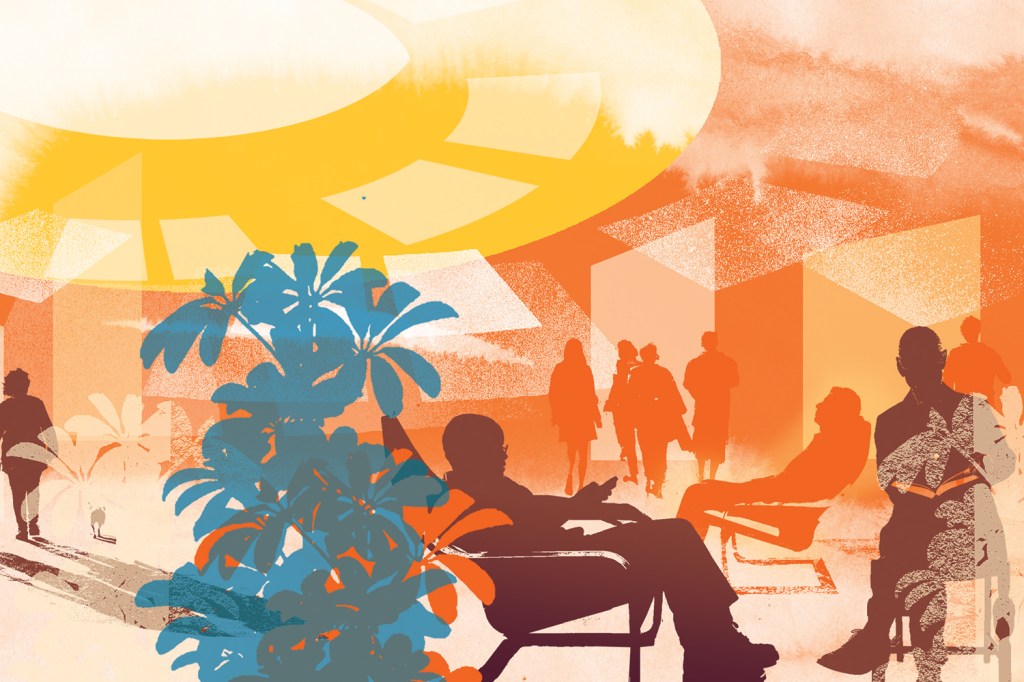Kyle Konis, AIA, assistant professor of architecture at the University of Southern California, approaches his research with a simple question: How do people experience buildings in use?
This tactile inquiry informs Konis’ study of how the built environment impacts human health. Konis has used this framework to examine the effects of daylighting as a sustainable strategy that can increase well-being among vulnerable populations, particularly those afflicted with Alzheimer’s disease and related memory impairments.
His work, as presented in the paper “Daylighting Design Performance Criteria for Alzheimer Care Facilities: Towards Evidence- Based Practices for Improved Care,” was the recipient of the 2013 AIA Upjohn Research Initiative grant. The grant provides material support of up to $30,000 for projects that “enhance the value of design and professional practice knowledge.”
Konis began studying the effect of daylighting in assisted memory-care facilities because they are places “where people have less agency over their own environments,” he says. Konis, who moved to USC in 2012 after having developed an interest in daylighting solutions through his graduate research at the University of California, Berkeley’s Lawrence Berkeley National Laboratory, teamed up with Dr. Edward Schneider, emeritus dean of the Andrus Gerontology Center at the USC Leonard Davis School of Gerontology, to look at ways to lessen dependency on drug treatments for memory-care patients by using increased daylight exposure to mitigate symptoms of depression.
“People get confused; they don’t know whether it’s day or night in nursing home communities,” Schneider says. “The question is, how can you improve the qualities of care through the environment?”
Konis developed the study in collaboration with Schneider and Wendy Mack, a professor of preventive medicine at USC. Participants from select dementia-care communities were exposed to “active light immersion” over a three-month period by increasing their daylight intake for two hours each morning. Though the sample size was small—only 21 people in the initial study—both the intervention and control group reported a decrease in depression symptoms after taking part, prompting Konis to repeat the study with a few refinements and a larger study population.
He did so with the support of the National Investment Center for Senior Housing and Care and Silverado Senior Living, increasing the pool of participants to 79 individuals across eight dementia-care communities. For the second pilot study, Konis used survey scores—collected using the Cornell Scale for Depression in Dementia and the Neuropsychiatric Inventory—to measure the effect on the depressive and behavioral symptoms of participants. “The Upjohn grant was the foundation for us to run the field study that followed,” Konis says.
Konis is contributing to a body of evidence demonstrating the positive impact of daylight access on health outcomes. As an architect, he is simultaneously exploring how to translate emerging evidence into an architectural prescription that could reduce the need for drugs to treat depression and negative behaviors. This requires “new tools to spatially map the daily and seasonal changes in daylight exposure and identify where a ‘daylight dosage’ should be orchestrated by the design,” he says. As the initial study proposed, this could manifest in a parametric design tool that can analyze and evaluate the daylighting performance of a given scheme and assist architects to design daylighting solutions that are informed by knowledge emerging from direct response to clinical trials.
The study could also codify a daylighting recommendation—a “compliance threshold”— to be incorporated into the WELL Building Standard, a proprietary scale from consulting firm Delos that proclaims itself “the world’s first building standard focused exclusively on human health and wellness.”
“Kyle’s work represents what could be a first step toward integrating tunable LED and advanced lighting technology into our therapeutic design standards,” says Paul Mullin, senior vice president of development for Silverado Senior Living. Silverado, which actively manages 36 memory-care communities across the country, has taken an interest in how Konis’ research can be incorporated into quality-of-care initiatives for its patients. “We are constantly affiliating with the best teaching and research institutions to implement and install therapeutic advances into our facilities for care,” Mullin says.
Building off the 2013 Upjohn grant, Konis recently received another one in 2016 to create a design assist tool to incorporate emerging health-based daylight performance requirements in actual buildings. It’s all part of Konis’ process, in which AIA has been an essential partner.
“AIA was the first to fund us, and that made it possible for other partners to get involved,” Konis says. “These higher-performance expectations will help serve the public interest for buildings that actively support the health and well-being of their inhabitants.”
